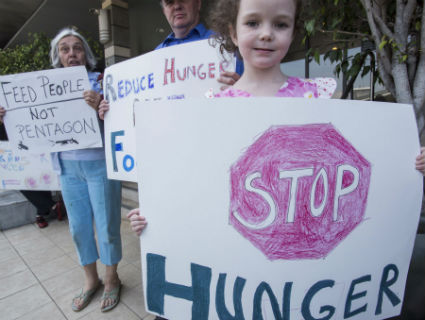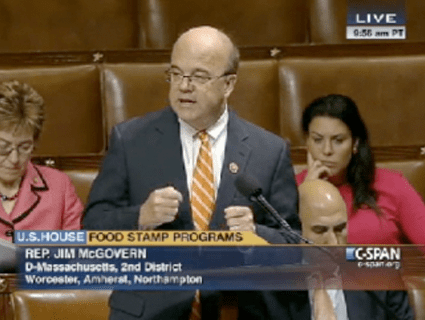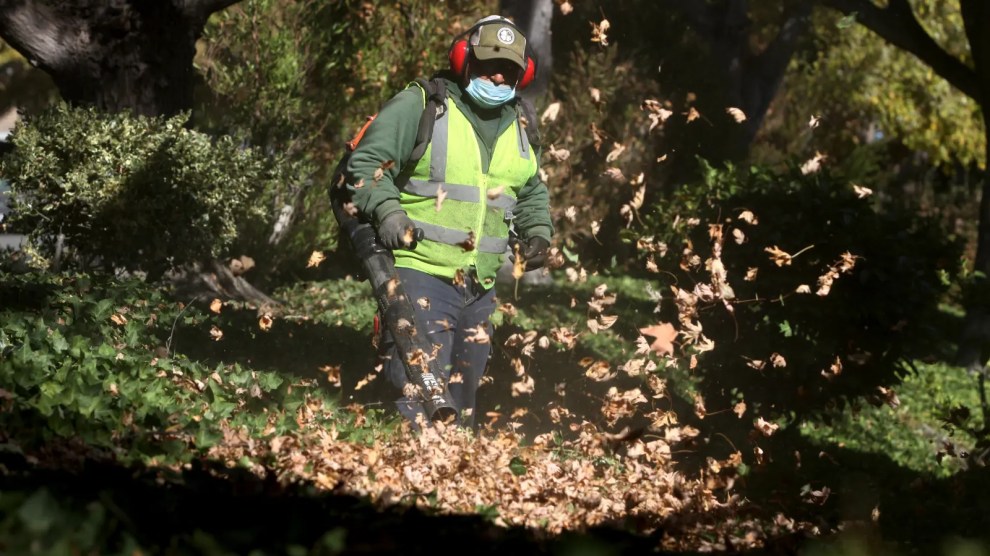
Rep. John Conyers (R-Mich.).Brian Cahn/ZUMAPress
The food stamps program—which helps feed 1 in 7 Americans—is in peril. Republicans in the House have proposed a farm bill—the five-year bill that funds agriculture and nutrition programs—that would slash food stamps by $40 billion. But by taking advantage of House Republicans’ desire to cut food stamps as much as possible, Democrats might be able to prevent cuts from happening at all.
To pull it off, Democrats would have to derail the farm bill entirely, which would maintain food stamp funding at current levels. Here’s how it would work, according to House Democrats who’ve considered the idea.
It’s an idea rooted in the last food stamp fight: In June, the House failed to pass a farm bill that cut $20 billion from the food stamp program. The bill went down because 62 GOP conservatives thought the $20 billion in cuts weren’t deep enough, while 172 Democrats thought they were too drastic. After the bill failed, House conservatives passed a much more draconian food stamps bill with $40 billion in cuts. But that bill was dead-on-arrival in the Democrat-controlled Senate.

House Speaker John Boehner (R-Ohio) has vowed to pass a farm bill. To win agreement from the Senate and President Barack Obama, he’s going to have to bring forward a bill with much shallower food stamp cuts. But introducing a farm bill with less than the full $40 billion in food stamp cuts will cost Boehner a lot of Republican votes—especially because conservative groups, including Heritage Action, the Club for Growth, and Americans for Prosperity, have been urging House Republicans to vote no.
That means Boehner is going to need some Democratic votes. His problem is the same as it was in June: math. He needs 216 votes to pass a bill. In June, 62 Republicans voted against a bill with $20 billion in cuts. If Boehner loses the same 62 Republicans this time around, he’ll need at least 47 Democrats to vote yes. But just 24 Democrats voted for the June bill. So Boehner will likely have to introduce a bill with lower cuts—costing him more Republican votes. The more Republicans Boehner loses, the more Democrats he’ll need.
And as Boehner saw in June, winning House Democrats’ votes for a bill that slashes food stamps by billions of dollars is a heavy lift—after all, if no farm bill passes, food stamps spending would remain at current levels. Why compromise when you can win by doing nothing at all? “It would make sense,” emails a House Democratic aide, “for progressives to vote against [the farm bill]. Makes me think of this”:
Some House Democrats are already publicly skittish about voting for any level of food stamp cuts. “Many progressive members of Congress, especially those of us who represent areas with high levels of unemployment and food insecurity, may have a hard time voting for additional cuts to federal nutrition programs,” Rep. John Conyers (D-Mich.), the ranking member of the powerful judiciary committee, explained in an email. A staffer for Rep. Jim McGovern (D-Mass.), who is part of the farm bill negotiating committee, says the congressman is “willing to compromise,” but “will not vote for a bill that makes hunger worse in America.” A staffer for Rep. Rosa DeLauro (D-Conn.) says that the lawmaker doesn’t want to get into “hypotheticals,” but that DeLauro does not support any further cuts to the food stamp program.
All this leaves Nancy Pelosi (D-Calif.), the Democratic minority leader, in the driver’s seat. If she wants to deliver 75 or 80 Democratic votes for a farm bill that cuts food stamps, she probably could. But so far, she hasn’t committed to asking her caucus to vote for a farm bill—even one with lower cuts. And she’s already demonstrated that she can unify her caucus against a farm bill with cuts she thinks are too deep. Without Pelosi pushing for a yes vote, a compromise farm bill could go down again.
Stopping the farm bill could backfire on Dems. If the bill passes, the funding levels it sets for food stamps would be locked in for the next five years. But if the bill doesn’t pass, Republicans on the appropriations committee would have to approve continued funding for food stamps. Usually, appropriators from both parties simply continue funding programs at previously authorized levels unless or until the law changes. However, they do technically have the power to refuse to approve new funding. That scenario “is pretty much unthinkable,” though, argues another Democratic aide.
New legislation could also end up shrinking the food stamp program—without a five-year bill locking in current funding, a future budget deal could more easily include food stamp cuts.
If Dems succeed in piggybacking on Republican opposition, and kill the farm bill, other important programs and key agriculture reforms will be neglected. Funding for conservation programs and for organic and small farms would dry up, for example. Wasteful subsidies to Big Ag would continue. But these things “are not life or death” like food stamps are, argues the second Dem staffer.
Conyers feels the same way. “As much as I support some of the needed reforms to wasteful direct payment programs and subsidized crop insurance,” he says, “I’m not willing to balance our budget by taking food out of the mouths of children.”
















